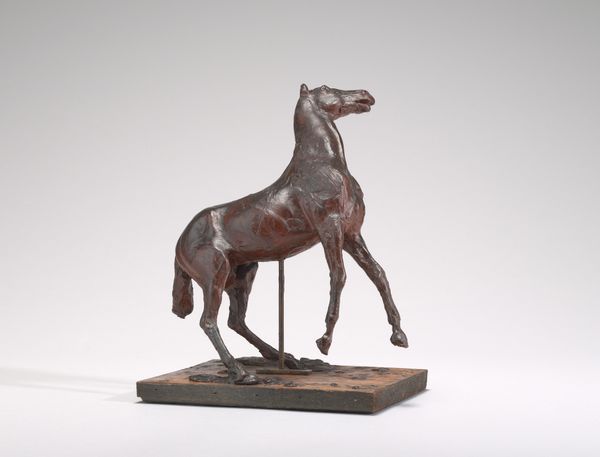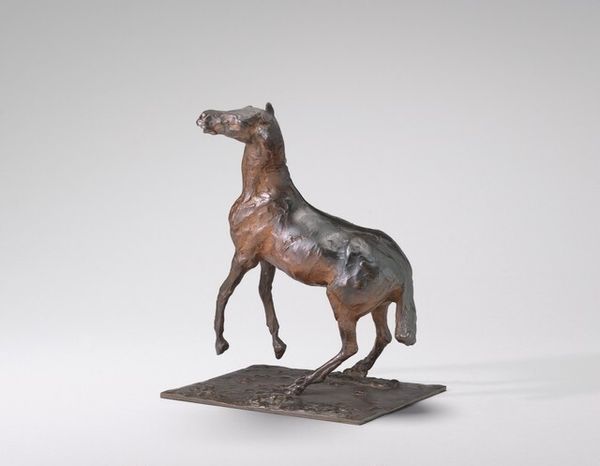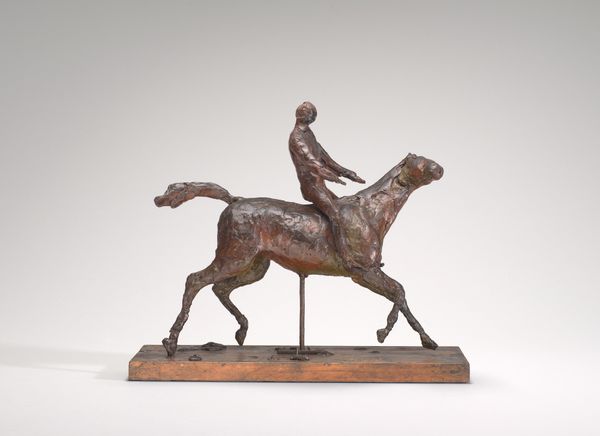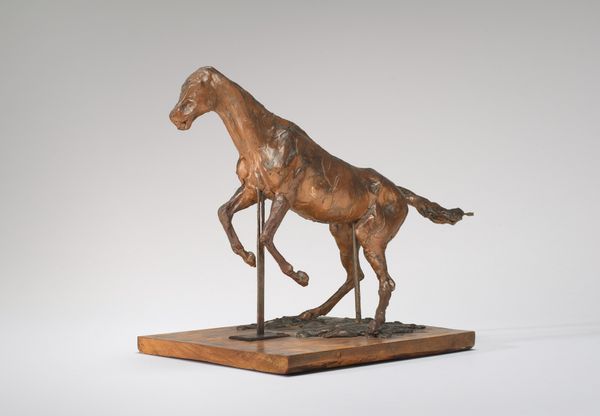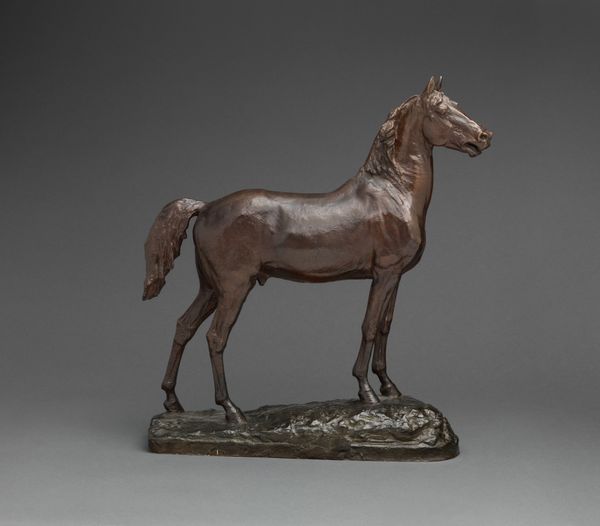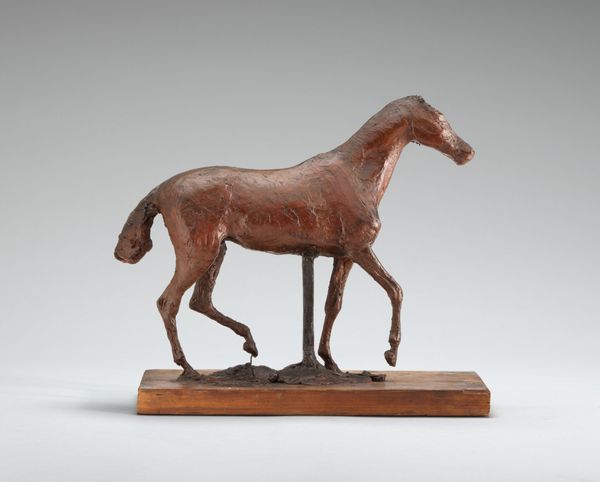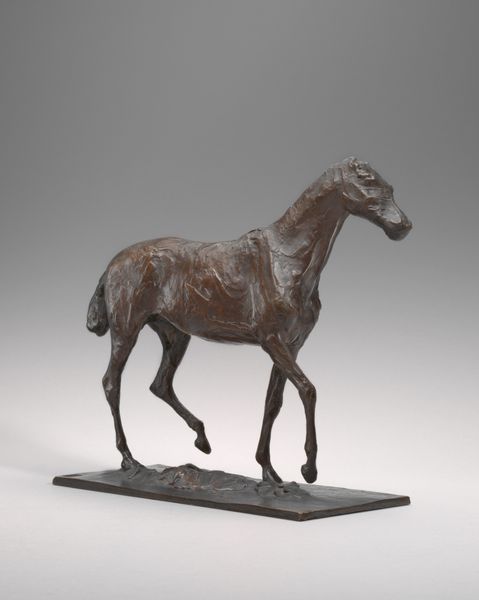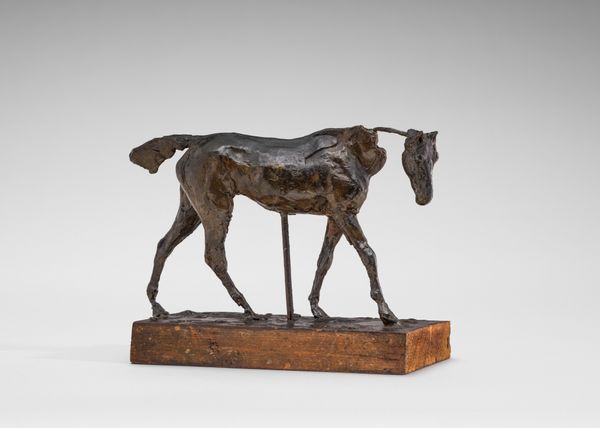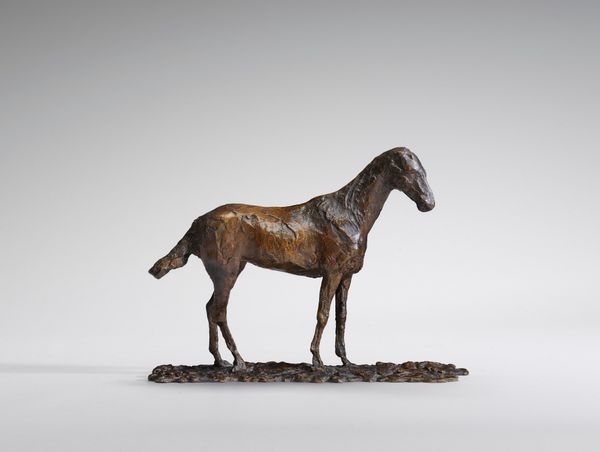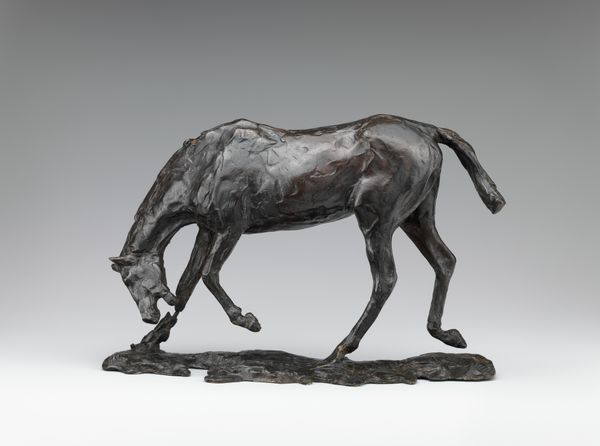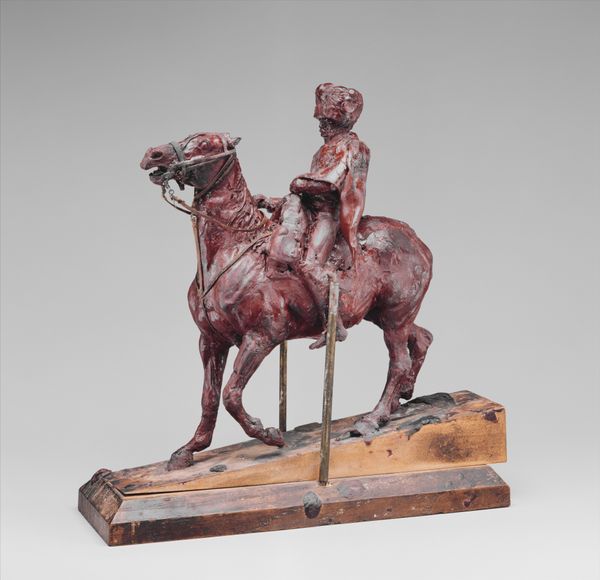
bronze, sculpture
#
impressionism
#
sculpture
#
bronze
#
figuration
#
sculpture
Dimensions: overall without base: 24.5 x 12.7 x 27.5 cm (9 5/8 x 5 x 10 13/16 in.) height without base (of horse): 23.2 cm (9 1/8 in.)
Copyright: National Gallery of Art: CC0 1.0
Curator: It's exhilarating, isn't it? This bronze sculpture, crafted by Edgar Degas around the 1870s, captures a horse trotting with incredible dynamism. The title is "Horse Trotting, the Feet Not Touching the Ground". Editor: I agree, the impression of movement is what strikes you first. Look at the angles of the legs and the almost violent texture of the bronze, especially around the torso. It has an unfinished quality, doesn't it? Curator: Precisely. It departs from the idealized equestrian statues that were popular at the time. Degas was likely influenced by the photographic motion studies of Eadweard Muybridge. They revolutionized how artists understood movement. We see this effect translated in a rough modeling technique and how Degas challenges high art. Editor: The roughness actually heightens the sense of arrested motion, doesn't it? The interplay of light and shadow across that coarse surface animates the entire figure. One has to question the definition of labor here, since this model challenges notions around fine or traditional arts practice. Curator: Indeed. Also consider that bronze casting was, and still is, an intensive industrial practice. It points to a wider network of labor and resources outside the studio itself. This brings up an important perspective to consider. Editor: Without those modern advancements Degas wouldn't have been able to examine form with this type of visual language. Look how the sculpture plays with negative space! That and the asymmetrical balance amplify its kinetic energy and, honestly, it's just beautifully rendered. Curator: Absolutely, there is also the material worth of the sculpture here: its cultural capital as an object for collectors, in counterpoint to the more quotidian existence of working horses at the time it was cast. This sculpture freezes it as both an artifact and as capital. Editor: A fleeting impression of movement made enduring by bronze and labor. It is thought provoking! Curator: I couldn't agree more. It makes you think about materiality, temporality, and the artist’s influence, doesn't it?
Comments
No comments
Be the first to comment and join the conversation on the ultimate creative platform.
